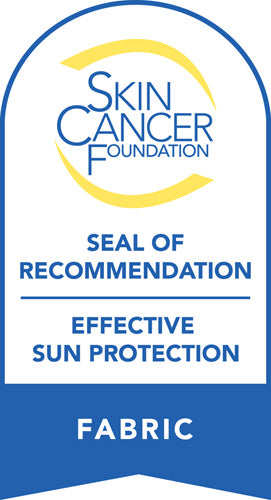Why You Need Kids Swim Shirts
With warm weather comes summer activities like swimming, boating, and beach getaways.
58% of American families vacation each year during the summer months. Playing in the sand, kayaking, and spending time at the hotel pool are just a few of the many outdoor water activities that children participate in.
With additional exposure to the sun, however, comes additional accouterments, each one designed to keep your child safe. Parents lug umbrellas, put on hats, and slather the sunscreen on their kids before the fun can commence.
Kids' swim shirts are one area that parents may not know a lot about. Why should you purchase them? How can they protect your child? Do they really live up to all the hype?
Continue reading to find the answers to these questions and more.
Everyone Should Spend Time Outdoors
Spending time outside offers benefits for everyone. It can reduce your stress, improve your focus, and help with your mood. Being among nature helps patients heal faster, both physically and mentally.
For children, one benefit of playing outside is that it encourages physical activity. Getting kids outside and moving is important for both the short-term and long term. Movement helps to strengthen muscles and cardiovascular health.
Another benefit of playing outdoors is improved creativity and brain development. Children who take part in free play show enhanced communication skills with a stronger vocabulary.
The third benefit to being outdoors is exposure to sunlight. The body produces vitamin D when exposed to the sun. As it helps with bone growth and health, this vitamin is important to children.
However, with exposure to the sun comes certain risks, such as damage to the skin. This is where sun protective clothing comes into play.
Risks of UV Exposure
UV radiation comes from the sun. There are three groups of UV rays, separated by how much energy they contain. By the time they reach the ground, the UVA and UVB rays are what you get exposed to.
These rays cause aging in skin cells and are why you get sunburned. Depending on skin types, some people may not show any damage to the skin, and some people will turn pink or red right away. Covering up your skin is the first line of defense against these rays.
The time between 10 a.m. and 4 p.m. is when UV rays are the most powerful. You can have larger exposure at higher altitudes, where the rays reach the ground sooner. UV rays also reflect off of surfaces like water.
Sunscreen May Not Work
Even though sunscreen can help to negate the effects of UV rays, there are reasons why it may not be working.
Sunscreen application should happen at least 15 minutes before you go into the sun for maximum benefits. It needs time to permeate the skin before it can do its job.
Sunscreen will break down and you must reapply for effectiveness—several times if you are out all day. If your children are wet, their skin needs to dry out before applying, which can lead many parents to forget this step.
Expired sunscreen or a lower SPF also may lead to ineffective coverage for you and your kids.
Why Buy UPF Clothing?
The Ultraviolet Protection Factor (UPF) lets you know how well the fabric of clothing will protect your skin. For example, UPF 50 tells you that 1/50, or 2%, of the sun's rays are reaching you, blocking 98%
In order to have the Skin Cancer Foundation's Seal of Recommendation, the garment in question must have at least a 30 UPF. Anything higher than that is good for protection.
Clothing makers that specialize in UPF clothing will include a label sharing how high the UPF percentage is and the Skin Cancer Foundation seal.
Choosing the Right Kids' Swim Shirts
The rashguard, swim shirt, or sun shirt are great choices for younger kids. They are made of spandex or nylon that breathes well and protects from cuts and scrapes.
Designed with surfers in mind, rashguards have short or long-sleeved options and are tight-fitting. They are made for wearing with swimsuits and can provide additional warmth. More commonly found at beaches and sandy areas, the rashguard is a great choice for protection from the sand as well as the sun.
Swim shirts come in short or long sleeves. Designed with water use in mind, they tend to be a looser version of the rashguard. If your child struggles with having their arms completely covered and wet, this may be a good option for them.
A sun shirt is often mistaken for a swim shirt but is intended more for out of water activities. The fabric will wick moisture and has the loosest fit of the three options.
No matter which of the three options you choose for your child, it should be something they will want to wear regularly. If they aren't comfortable with it, they will fight not to wear it every time you leave the house.
When to Wear Protective Swim Wear
Swimming and water play come to mind first when considering when to wear these protective suits. However, because they are lightweight and comfortable, you may want to consider wearing them other times as well.
Because of the drying and wicking qualities of swim shirts, hiking is one time when wearing one is a smart choice. Not only will your kids have proper protection, but they won't be hot like they would be if they wore a regular long-sleeved shirt.
A swim shirt could be worn during outdoor play. No matter where you choose to have your children sport their swim shirt, don't forget about other areas where sunscreen should be worn to supplement defense, like the face, legs, and neck.
Guaranteed Protection From the Sun
Guarding your children against the negative effects of the sun is as easy as investing in kids' swim shirts. With the variety of colors and a top level of comfort, your child will want to wear their swim shirt everywhere they go.
Be sure to check out our kids and toddler options here for both boys and girls. With our UPF 50+ guarantee, your kids will be well protected this summer.



